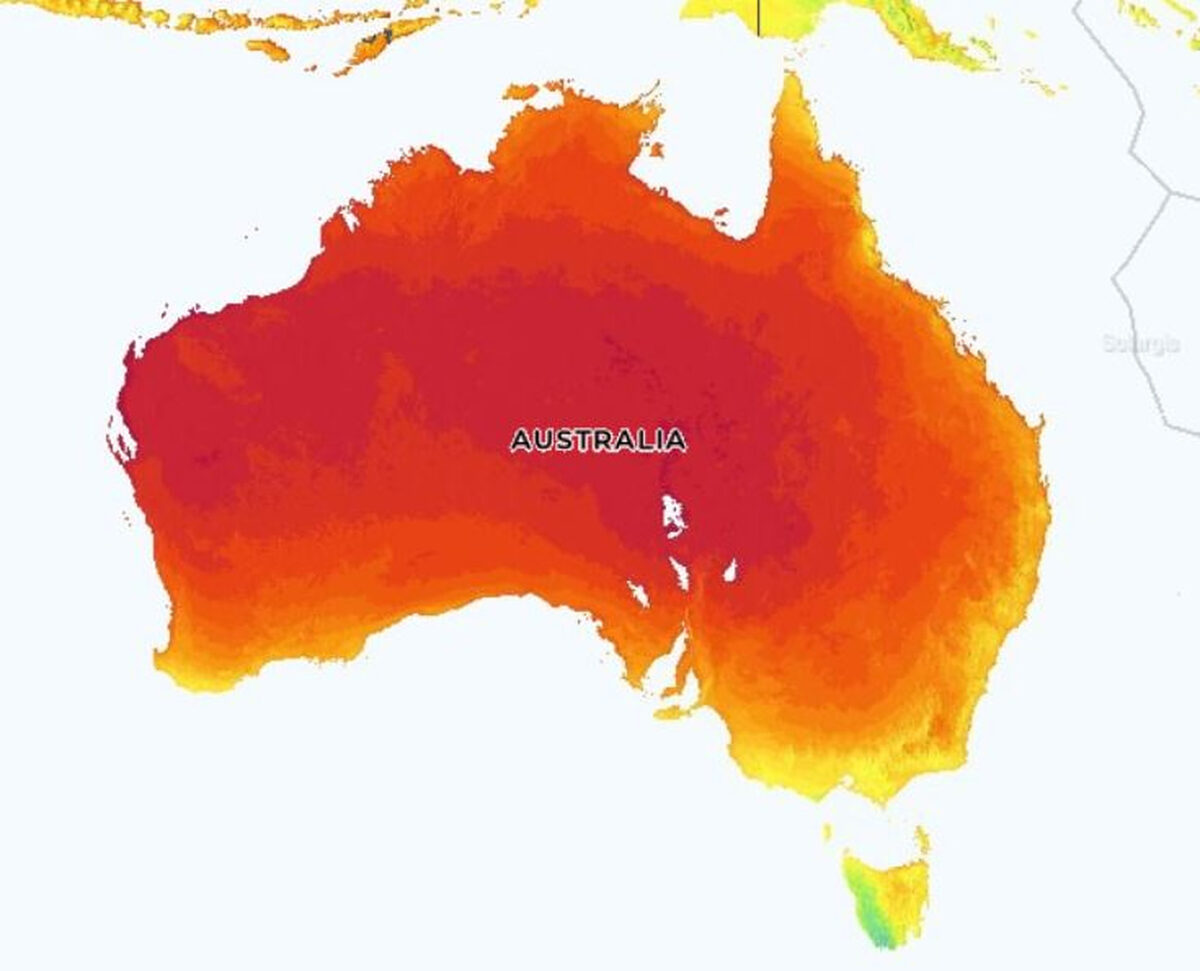Unlike European countries, Australia is physically isolated from its neighbours and cannot share electricity across national boundaries. It is successfully coping alone with rapidly increasing levels of solar and wind and is finding it to be remarkably straightforward and cheap.
Solar and wind
Currently, Australia procures 38% of the electricity in its National Electricity Market from renewables, mostly from solar and wind. The government target is 82% renewable electricity by 2030 (see figure below). Australia is finding the task of managing high levels of solar and wind to be easier and less expensive than many people anticipated.

Image: CER
The state of South Australia (population 1.7 million) is tracking toward 100% solar and wind in 2027 on an annual basis (see figure below). South Australia is relatively weakly connected to other states. Additional gigawatt-scale transmission is under construction, which will allow South Australia to export substantial amounts of solar and wind electricity to the eastern states.

Image: OpenNEM
The solar and wind fraction for the month of December 2022 was 85% (see figure below), with an average price on the spot market of $55 (USD 37)/MWh. The South Australian grid is highly stable and generally delivers lower electricity prices than other states. South Australia provides compelling evidence that solar photovoltaics and wind is cheaper than fossil gas generation.

Image: OpenNEM
Finding solutions
Australia does not have any nuclear or geothermal generation and low capacity for hydroelectricity (about 6% of annual generation). Virtually all new generation capacity in Australia is solar and wind.
Australia (population 26 million) has about 15 GW of pumped hydro that has been announced by the governments of Queensland, New South Wales, Victoria, and Tasmania, with about 700 GWh of combined storage. None involve new dams on rivers. Multi-gigawatt-scale investment in batteries and thousands of additional kilometres of gigawatt-scale transmission is in progress.
Australia is demonstrating straightforward solutions to variability of solar and wind and offers an economically compelling model for rapid removal of fossil fuels from electricity generation.
Solar and wind comprise three-quarters of new global generation capacity (see figure below). This is compelling market-based evidence that they are the cheapest method of electricity generation. Coupled with the “electrification of everything,” they can do the heavy lifting to reach zero emissions before mid-century. Balancing techniques are off the shelf, comprising storage, transmission and demand management.

Image: Multiple
Authors: Prof. Andrew Blakers /ANU) and Prof. Ricardo Rüther (UFSC), the International Solar Energy Society. ISES is a UN-accredited membership NGO that was founded in 1954. It is working toward a world with 100% renewable energy for all, used efficiently and wisely.
Andrew.blakers@anu.edu.au and rruther@gmail.com
The views and opinions expressed in this article are the author’s own, and do not necessarily reflect those held by pv magazine.
This content is protected by copyright and may not be reused. If you want to cooperate with us and would like to reuse some of our content, please contact: editors@pv-magazine.com.








1 comment
By submitting this form you agree to pv magazine using your data for the purposes of publishing your comment.
Your personal data will only be disclosed or otherwise transmitted to third parties for the purposes of spam filtering or if this is necessary for technical maintenance of the website. Any other transfer to third parties will not take place unless this is justified on the basis of applicable data protection regulations or if pv magazine is legally obliged to do so.
You may revoke this consent at any time with effect for the future, in which case your personal data will be deleted immediately. Otherwise, your data will be deleted if pv magazine has processed your request or the purpose of data storage is fulfilled.
Further information on data privacy can be found in our Data Protection Policy.